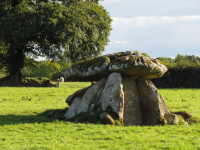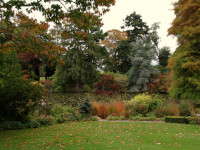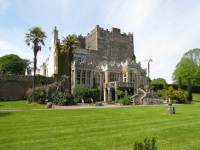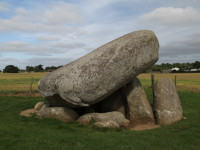
County Carlow
County Carlow is situated in the South-East of Ireland within the province of Leinster. It is an inland county, is the second smallest in the country and the third-smallest in terms of population. The River Slaney flows through its eastern part, which is an extension of the granite area of County Wicklow. The west of the county is situated on the fertile limestone valley of River Barrow (the second-longest river in Ireland). The north-west of County Carlow is the undulating upland land. On the border with County Wicklow, there are the Blackstairs Mountains with the highest peak of 796m. The main town is Carlow, a bustling market town with an ancient history and tradition. For such a small county, Carlow has a lot to offer to the visitors. There are many noteworthy castles and manor houses as Huntington Castle, Borris House or Lisnavagh House. There are also many important megalithic sites as for example Coolasnaghta Stone Row, Knockroe Rock Art or Brownshill Portal Tomb which has a granite capstone weighing over 100 tonnes, making it the one of the largest of its kind in Europe. Amongst the most important monastic monuments of County Carlow are Clonmore Early Christian Site, The White Church (ruins of the 10th-century oratory), St Laserian\'s Cathedral and St Mullins Monastic Site. For the outdoor activists, there are golf courses, horse riding and many walking trails.
Interesting places in county Carlow

Haroldstown Dolmen
Southeast Ireland | County Carlow
Haroldstown Dolmen is situated on the banks of the Derren River about 8 km northeast from Tullow in County Carlow, just off the road R727 beside the Acaun Bridge. It is a very well preserved portal tomb which dates back to the Neolithic period (4200 - 2400 BC). It consists of two slightly tilted granite capstones supported on ten large upright stones, two of... more info and photos

Altamont Gardens
Southeast Ireland | County Carlow
Altamont Gardens are situated on the banks of River Slaney 10 km south from Tullow in County Carlow. This Robinsonian-style garden is located on the grounds of 18th century Altamont House, but most of the garden was created at the beginning of the 20th century by Lecky Watson, and then by his daughter, Corona North. After her death in 1990s house and garden ... more info and photos

Huntington Castle
Southeast Ireland | County Carlow
Huntington Castle is located in the village of Clonegal in County Carlow (about 30 km southeast of Carlow Town). It was built in 1625 by Sir Laurence Esmonde (major general of King James I's forces in Ireland and governor of Duncannon Fort) as a garrison, which later became his family home. He received the title of Lord Esmonde for his loyal service. Laurenc... more info and photos

Brownshill Portal Tomb
Southeast Ireland | County Carlow
Brownshill Portal Tomb, also known as Kernanstown Cromlech is located a few kilometres east from Carlow town, just off the road R726. This megalithic monument is circa 5000 years old and is reputed for having one of the heaviest capstones of all European dolmens. Approximate weight of this massive granite capstone is 100 tons and measures around 6 by 5 metre... more info and photos



















